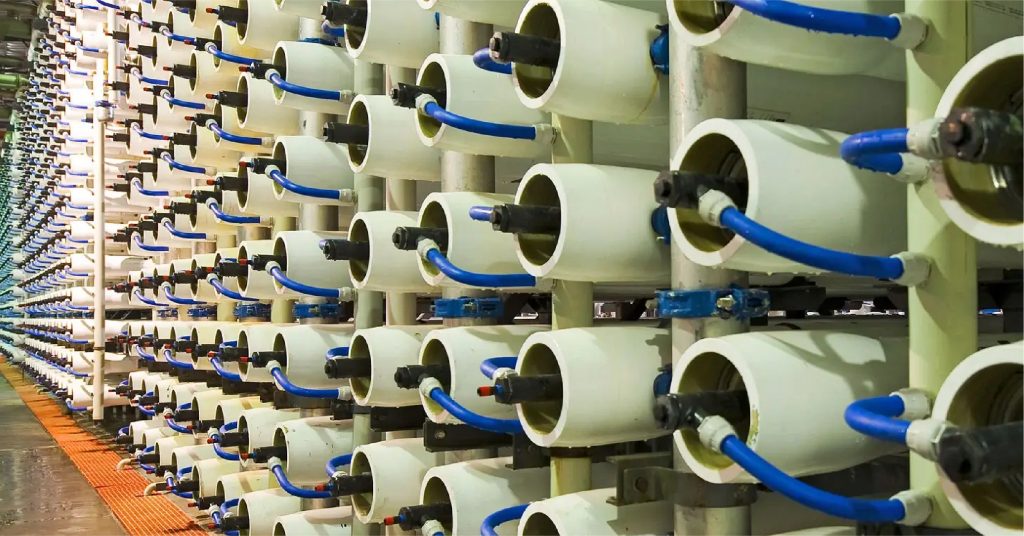Water quality in Bangladesh is a pressing concern, particularly as the country struggles with the challenges posed by rapid urbanization, industrial growth, and climate change. Contaminants from agricultural runoff, industrial effluents, and inadequate sanitation systems have led to the degradation of water resources, making it increasingly difficult to provide safe drinking water and meet the water needs of various sectors. Against this backdrop, membrane water treatment has emerged as a powerful and innovative solution to address these challenges. This blog will explore the advances and benefits of membrane water treatment in Bangladesh, focusing on its role in improving water quality, its applications in different sectors, and the latest technological innovations that are driving its adoption.
Understanding Membrane Water Treatment
Membrane water treatment is a process that uses semi-permeable membranes to separate contaminants from water. These membranes act as physical barriers, allowing only clean water molecules to pass through while trapping larger particles, bacteria, viruses, and other impurities. The result is highly purified water that is free from a wide range of contaminants.
In Bangladesh, membrane water treatment is increasingly being used to address a variety of water quality challenges. From providing safe drinking water in urban and rural areas to treating industrial effluents and brackish water, membrane technology is proving to be a versatile and essential tool in the country’s efforts to improve water quality. The growing significance of membrane water treatment in Bangladesh is also driven by its ability to address specific local challenges, such as high levels of arsenic and salinity in groundwater, which are common in many parts of the country.
Membrane Filtration Water Treatment: The Core of Modern Water Purification
Membrane filtration Water treatment involves the use of different types of membranes, each designed to filter out specific contaminants based on their size and properties. The four main types of membrane filtration are:
- Microfiltration: Microfiltration membranes have pore sizes that typically range from 0.1 to 1.0 microns. They are used to remove suspended solids, bacteria, and some viruses from water.
- Ultrafiltration: Ultrafiltration membranes have smaller pore sizes, typically between 0.01 and 0.1 microns. They are effective in removing a wider range of contaminants, including most bacteria, viruses, and larger organic molecules.
- Nanofiltration: Nanofiltration membranes have even smaller pores, usually ranging from 0.001 to 0.01 microns. These membranes are used to remove dissolved organic compounds, certain salts, and other smaller contaminants from water.
- Reverse Osmosis: Reverse osmosis is the most advanced type of membrane filtration, with pore sizes smaller than 0.001 microns. It is capable of removing nearly all contaminants, including salts, heavy metals, and even the smallest viruses and bacteria.
Industrial Water Treatment Plant Membrane
The role of membrane technology in industrial water treatment plants is critical, particularly in a country like Bangladesh, where industrialization is rapidly increasing. Industrial water treatment plant membranes are used to treat process water, recycle wastewater, and remove contaminants that could harm equipment or affect the quality of products.
One of the primary benefits of using membrane filtration in industrial water treatment is its ability to achieve high levels of purification with minimal chemical use. This not only reduces the operational costs associated with chemical treatments but also minimizes the environmental impact of the treatment process. Membrane technology is also highly efficient in removing a wide range of contaminants, from suspended solids to dissolved salts, making it suitable for industries that require high-purity water, such as pharmaceuticals, textiles, and electronics manufacturing.
How Ion Exchange Advances in Membrane Water Treatment Technology
Ion Exchange is at the forefront of advancing membrane water treatment technology in Bangladesh. They offer a wide range of membrane filtration systems, including those designed for microfiltration, ultrafiltration, nanofiltration, and reverse osmosis. These systems are tailored to meet the specific needs of Bangladesh’s water challenges. Ion Exchange’s membrane water treatment solutions are designed to be energy-efficient, cost-effective, and environmentally friendly.
HYDRAMEM Membranes
HYDRAMEM, high-performance membranes manufactured by Ion Exchange, represents the latest generation of membrane technology. Combining superior quality with decades of experience in membrane element manufacturing, HYDRAMEM has become the preferred choice for industrial, institutional, and domestic applications alike. Their wide range of products includes:
- Low-Pressure RO Membranes
- Brackish Resistant Membranes
- Fouling Resistant Membranes
- Sea Water RO Membrane
- Nanofiltration Membrane
- Ultrafiltration Membrane
Conclusion
Membrane water treatment is a revolutionary approach to addressing the water quality challenges in Bangladesh. From its core applications in membrane filtration water treatment to its role in industrial water treatment plant membranes, this technology offers a powerful solution for ensuring clean and safe water. As Bangladesh continues to develop and face new water challenges, the adoption of advanced membrane water treatment technologies will be critical to ensuring sustainable water management.


